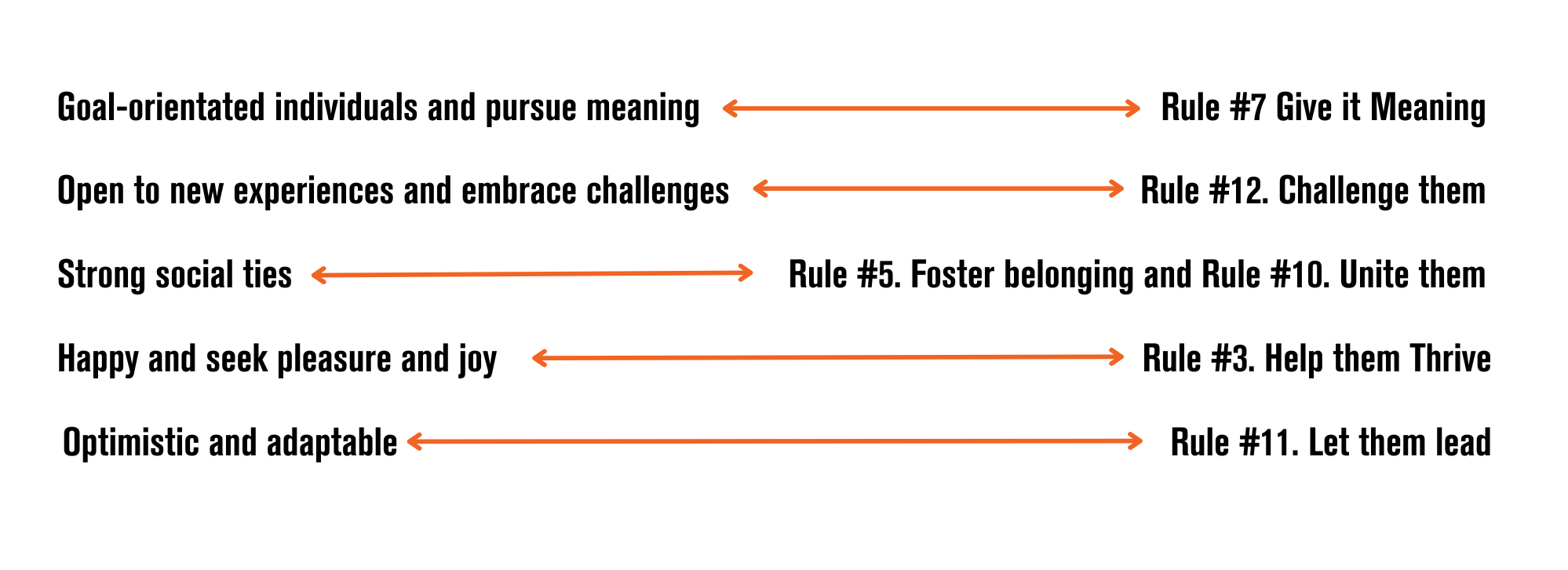A Neuroscience Approach to Building Resilience in the Workplace
Written by: Tom Nash
(View Author Bio)
Organisational resilience has increased in focus the last couple of years with businesses thriving to the world of uncertainly and challenges. But what is the science behind the human response to stress and how can organisations foster employee resilience?
Creating a culture of recognition help promote and drive key behaviours that build and show resilience. Below, we cover the basics but then take a deep look at the science and actual strategies organisations can implement to help improve their culture and employee resilience.
Scroll Down
What is Resilience?
Resilience is the human capability for positive outcomes despite challenging or threatening circumstances (Byron Egeland et al. 1993). Another way of putting it is resilience means “achieving a positive outcome in the face of adversity” (Karatsoreos and McEwen, 2011).
We admire people who showcase resilience and it is not hard to think of examples, whether from a sports athlete, a sporting team, a colleague or a family member. It is inspiring to see individuals/groups succeed while overcoming stressful or challenging forces. Resilient people not only can bounce back from failure but can tolerate an array of negative internal and external forces. When things do not go to plan they remain calm and steady.
Resilient people have qualities and characteristics that allow them to strive compared to less resilient individuals. They are more likely to be:
- Goal-orientated individuals and pursue meaning (Rule #7 Give it meaning)
- Open to new experiences and embrace challenges (Rule #12. Challenge them)
- Strong social ties (Rule #5. Foster belonging & Rule #10. Unite them)
- Happy and seek pleasure and joy (Rule #3. Help them thrive)
- Optimistic and adaptable (Rule #11. Let them lead)
Neuroscience and Resilience
The human brain plays a pivotal role in behavioural and physiological responses to stressful situations, impacting our central and peripheral nervous systems that release chemicals triggering our emotions and responses. Thus, resilience relies on neural circuits sending chemicals (neurochemicals and hormones) governing fear, reward, social and emotional regulation. To make better sense of this, let’s look at a resilient individual and a non-resilient individual when confronted with a stressful situation and how the brain, circuits and chemicals interact.
Both individuals experience a release of stress hormones such as norepinephrine, which helps us react appropriately to danger by readying us to fight or flee. The non-resilient individual is likely to experience the unrestricted repeated release of norepinephrine causing chronic anxiety. For the resilient individual, dopamine and serotonin are released to counteract anxiety as these two chemicals produce that feeling of positivity. This positive emotion provides the mechanism to bounce back quickly.
Negative emotions have been found to increase physiological arousal, narrow our focus of attention, and restrict our behaviours. Whereas positive emotions reduce arousal and broaden our focus, leading to more creative and flexible responses to stress.
There are many other examples where different parts of the brain (prefrontal cortex, nucleus accumbens, amygdala) and a variety of chemicals (neuropeptide Y, cortisol etc) play a role in determining resilience. What is important to understand is the brain and chemical releases in the body determine how a person faces fear, challenges, and stressful situations.
The biological makeup of an individual plays a part in determining the level of resilience, but considering the human brain is ever-changing, always learning and adaptive, resilience is built through life experience and can be taught. Therefore, humans can teach the brain to self-regulate the nervous system response effectively.
Rules of Engagement
At BI WORLDWIDE, our recent global survey conducted across 35 countries and over 20 industries, uncovered 12 imperative rules to optimise employee engagement. The 12 New Rules of Engagement guide organisations to develop strategies that foster loyalty, commitment, effort and inspiration in the workplace enhancing the overall employee experience.
Successfully building resilient individuals by referring to specific rules from our Rules of Engagement study can build resilient organisations.

Develop a Common Purpose – Rule #7 Give it Meaning
Resilient individuals are goal orientated and pursue meaning.
The human brain overcomes challenging situations or setbacks by narrowing its focus to the end purpose. Therefore, it gives the brain the opportunity to pay more attention to meaningful pursuits and less attention to stressors. If the brain is more focused on the positive outcome than the negative outcome, the quicker humans bounce back.
Based on our own research this is not surprising. Purpose-oriented organisations shared by employees is significantly tied to engagement and commitment. According to a Deloitte report on organisational resilience “a purpose-oriented workforce tends to be one that seeks out challenging opportunities, engages in connecting with others to learn faster, and is overwhelmingly confident in its ability to learn and adapt.”
Resilience is activated by a common purpose because it makes people feel like they are part of something bigger, beyond just a job and a paycheck. When people are more invested in their work and the outcome, it fuels resilience as they're more motivated to ride out and overcome the challenges.
Health and Wellbeing – Rule #3. Help them Thrive
Resilient people are happy and seek pleasure and joy.
Never have work, personal life, and health been so inextricably connected. Protecting employees’ holistic wellbeing doesn’t just reduce costs, it invigorates the employees and the business. There is no escaping the fact that a person’s job influences his or her health one way or the other.
Biologically, resilience is the ability to modulate and constructively harness stress responses, which relies on both the physical and mental health of an individual. A healthy mental state is more likely to produce positive emotions (dopamine and serotonin) and a healthy physical state correlates to optimal energy levels (adrenaline), all important chemicals that not only build resilience but motivates humans to seek out pleasure and joy (reduce symptoms of depression and elevated mood).
According to Gallup, employees who say their organisation cares about their wellbeing are five times more likely to also strongly agree that when something goes wrong, their team looks for solutions rather than blaming each other.
Related article: Supporting Employee Health and Wellbeing
Therefore, organisations and managers that actively encourage and demonstrate support for work-life harmony will thrive.
Teamwork - Rule #5. Foster belonging and Rule #10. Unite them
Resilient people have strong social ties
An effective way to enhance resilience is to strengthen relationships. From a neuroscience perspective relating to resilience, bonding with others and having strong social ties activates the particular area of the nervous system (parasympathetic nervous system) which lowers subjective and physiological stress and prompts the release of the hormone oxytocin. Oxytocin has an amazing ability to limit cortisol (stress hormone), therefore reducing anxiety and fear. This chemical is also linked to promoting affiliative behaviours and emotions, such as trust, that encourage continued socialising.
Fostering belonging in the workplace (strong social network to fall back on) and uniting the team (empowering teams to collaborate) is very powerful. It increases an individual’s self-confidence, provides a safety net if we should fall and bolsters our belief that we can overcome obstacles. As a result, employees tend to solve problems rather than passively avoiding challenges more actively. After all bonding with others does provide greater security; a group that works closely together is stronger than an individual.
The most resilient organisations leverage collective talents to achieve the common goal by proactively tighten team connections. It is all about achieving a sense of teamwork and belonging.
Training - Rule #4. Realise their potential
The human brain is ever-changing, always leaning and is adaptive, therefore reliance can be taught.
As mentioned previously, genetics and personality traits are tied to resilience. Nevertheless, the attributes of the brain allows humans to learn to think and act in ways that enhances resilience over time. Through absorbing information, understanding the benefits, reinforcement, applying discipline and consistent practice leads to all types of behavioural change. Therefore, anyone can develop skills to become more resilient.
The human brain can take in vast amount of information and develop habits that become easier and easier through repetition (no different to exercising). The more we repeat and reinforce positive behaviours, the more we activate specific brain areas, the more neural connections form in those areas, enabling the neurons involved to transmit their messages more efficiently.
In a study published by PwC, initiatives and programs that fostered a resilient and mentally healthy workplace returned $2.30 for every dollar spent — with the return coming in the form of lower health care costs, higher productivity, lower absenteeism and decreased turnover.
It is worth the time and effort for organisations to develop learning and training initiatives aimed at building resilience, giving employees the opportunity to realise their potential.
Top psychologists in this field commonly recommend the below resilience topics:
- Exercise mindfulness
- Develop mental agility
- Cultivate compassion
- Physical activity
- Knowing how and when to relax
- Perspective
Organisations and managers are not required to be resilient experts, they just need to provide the tools and the right resources for employees to be successful and realise their potential.
Culture of Recognition - Rule #9. Magnify their success
Acknowledging and sharing contributions and accomplishments ensures key behaviours will be multiplied. Simply put, what gets recognised gets repeated.
Receiving recognition (in a meaningful and authentic way) releases dopamine, epinephrine and serotonin. With dopamine as the driver, all three neuromodulators interact and affect each other which enhances our emotions and desire to succeed. Receiving recognition with a reward enhances that chemical release.
The employees that showcase the ability to stay strong and focused during tough times and challenging tasks deserve recognition. Recognition allows for reflection on how the resilient behaviours were demonstrated and anticipating future recognition motivates them to repeat the resilient behaviours.
The behaviours for leaders to look out for when looking to recognise resilience are:
- Problem-solving
- Innovation
- Positive mindset
- Teamwork
- Health and wellbeing
- Above and beyond
A consequence of avoiding recognition is one of the main reasons why employees are disengaged. Organisations with high employee engagement are more resilient and able to weather many challenges.
In the end, employees want to enjoy their work, find meaning, be recognised when they do well and feel a sense of achievement. Frequent and meaningful recognition helps fulfils this want and starts a cycle of repeated behaviours.
Optimistic and adaptable (Rule #11. Let them lead)
Resilient people are optimistic and adaptable.
As mentioned above building resilience in an organisation involves a number of initiatives. But all those initiatives won’t be as effective if organisations don’t empower their staff.
“Those allowed to pursue new ideas had 13.7 times greater odds of being inspired than those who were not allowed to do so.” BI Worldwide study – 12 Rules of Engagement."
True empowerment is not just a place to voice ideas but building trust to let them take the lead and show what they can do, take risks, and be supported regardless of the outcomes. Empowering employees are not only more likely to stay, but they are also more likely to be innovative, adaptive and proactively find solutions.
Consider the below questions to help determine if your employees feel empowered:
- My organisation trusts me with important decisions
- I feel a culture of support, even when I make a mistake
- My ideas are taken seriously
- I get the chance to lead at my job
In the end, getting the chance to run things is a more powerful motivator than just getting to comment on how things are run. Empowering this way will ignite inspiration within the organisation.
Building resilience in an organisation is not a short-term exercise. It requires a cultural shift focusing on meaning, support, collaboration, learning, recognition, and empowerment. The long-term outcome, building a culture that thrives before, during, and after adversity.
Redefine how you define employee engagement.
















